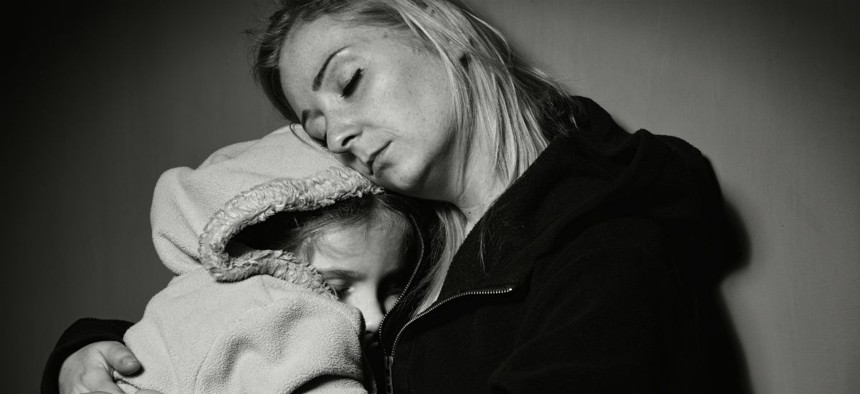How Many Impoverished Families Could You Help with $100 Million?
That's how much money HUD spent on families that earned too much to qualify for housing assistance.
More than 45 million people—14.5 percent of the total U.S. population—face a daily struggle with poverty. Despite the plight of many families who work to scrape by for another day, the Department of Housing and Urban Development spends more than $100 million each year providing public housing assistance to families whose income exceeds eligibility income limits.
According to a recently released Office of Inspector General audit, of the 1.1 million families HUD assists with public housing, as many as 25,226 families exceed eligibility income limits. The IG estimates that HUD will pay as much as $104.4 million over the next year for public housing units occupied by over-income families that otherwise could have been used to house the 579,890 low-income families on waiting lists. Worse, the IG found that none of the 15 surveyed housing authorities had established and implemented policies to evict over-income families or reduce the number of over-income families in its programs.
It is important to note that although public housing authorities have the discretional authority to require over-income families to find unassisted housing, income limit restrictions apply only at admission, and Federal law does not require income limits for continued occupancy. (Paragraph 3-2(a)(5) of HUD’s Public Housing Occupancy Handbook 7465.1)
Like many social services programs, this is a complicated issue that requires a nuanced solution. There are numerous considerations that come into play in developing any eviction policy, such as time limits, asset limitations, earned income disallowances, and participation in self-sufficiency programs. However, the IG found that “HUD did not have data to show whether [11,324 families] participated in a Family Self-Sufficiency program” and “HUD did not capture earned income disallowance information in its automated system.” This kind of data is critical to any meaningful reform of HUD’s public housing assistance programs.
Simply evicting every over-income family, regardless of the context of that family’s situation, would be disastrous not only from an ethical perspective, but from a financial perspective as well – it would actually cost $116.5 million to do so, $12.1 million more than the cost HUD incurs by taking no further action. That is not to say that doing nothing is the recommended course of action. There are clearly instances of egregious abuse, where families are taking advantage of the program to the detriment of others that could desperately use the help. For instance, in one case cited by the OIG, a single tenant who had total assets valued at nearly $1.6 million (including real estate valued at $470,600) was paying only $300 a month in rent. This individual, while likely a legitimate beneficiary at one point, has clearly eclipsed the point of self-sustainability and should be making way for people still struggling at the bottom of the ladder.
While HUD is working to meet the OIG’s recommendation that “direct housing authorities . . . establish policies to reduce the number of over-income families in public housing,” Public Housing agencies can obtain third-party data to determine the minimum income thresholds where families would be eligible for eviction consideration. This is where a combination of public data repositories, analytics and advanced linking technology can help. Analytics can transform large volumes of disparate data, such as public records, into actionable insights. Mapping data patterns and highlighting outliers (like half a million dollars in real estate assets) can suggest program abuse. Technology programs centered around big data and analytics could provide significant return on investment, support the mission of HUD, and provide millions of dollars in services directly to the families who need them most.
Abuse of public housing assistance programs not only wastes taxpayer dollars, it hurts some of the most disadvantaged members of our society. Although it is clear action needs to be taken to establish policies that remove willful abusers of the system, it is equally important that we do not harm the honest beneficiaries of these programs – the last thing they need is more roadblocks put in their way. To maintain this delicate balance, Public Housing agencies need the ability to responsibly collect, verify and analyze data pertaining to housing assistance beneficiaries. Data mining and analytics have been crucial tools in the fight against fraud, waste and abuse across the financial, health care and human service sectors, with proven success stories that have saved agencies and states millions of dollars. The continued lack of oversight is otherwise perpetuating a pattern of abuse that shifts the costs directly from the abusers onto our nation’s poorest families.
Monty Faidley is Director, Health and Human Services, LexisNexis® Risk Solutions Inc.
(Image via itsmejust/Shutterstock.com)



